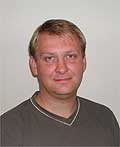Michael Ringgaard
CSC
|

|

Michael Ringgaard is a Systems Architect at Computer Sciences Corporation. His main focus is software architecture and frameworks for the Java and Microsoft platforms. Recent work includes distributed architecture support components including a persistence framework, a fully distribted object cache, EAI framework components, and server software for a distributed solution based on PDAs. Right now, Michael has devoted most his time to fine tuning his new baby: jbox. Before joining CSC, Michael worked for TeleDanmark A/S, where he was lead architect working on a distruted CTI and call-center solution. Michael holds a M.Sc. in Computer Science from Aarhus University.
|
|

A Pure Java Cluster Node
Tuesday 14:00 - 15:00 (Java Room)
- Slides
JBox - A Pure Java Cluster Node
Building solutions using distributed architectures has become a viable alternative to traditional n-tier application server solutions. Companies like Google have differentiated their sevices from competition by building and using a more flexible computing platform for their search service. In order to build, deploy, operate and maintain solutions that are distributed across tens, hundreds or perhaps even thousands of server nodes we need distributed architecture support components.
First of all the server nodes needs to be as simple as possible in order not to compromise the TCO of solutions depending on a massive number of computers. Hundreds of server nodes runnning Windows, or even Red Hat Linux, would probably be any system administrator's nightmare. JBox is a server node built on cheap Intel based hardware with only a minimal OS kernel, just enough to support a JVM. Of course we need more infrastructure components to run and manage a complete distributed solution. Fortunately, a lot of existing technologies can be used when developing the distributed architecture blueprint. J2SE - Jini and JavaSpaces - JMX - J2EE During this presentation we will show how the JBox server node was built and how the above technologies and specifications can be applied in developing a distributed architecture blueprint.
|